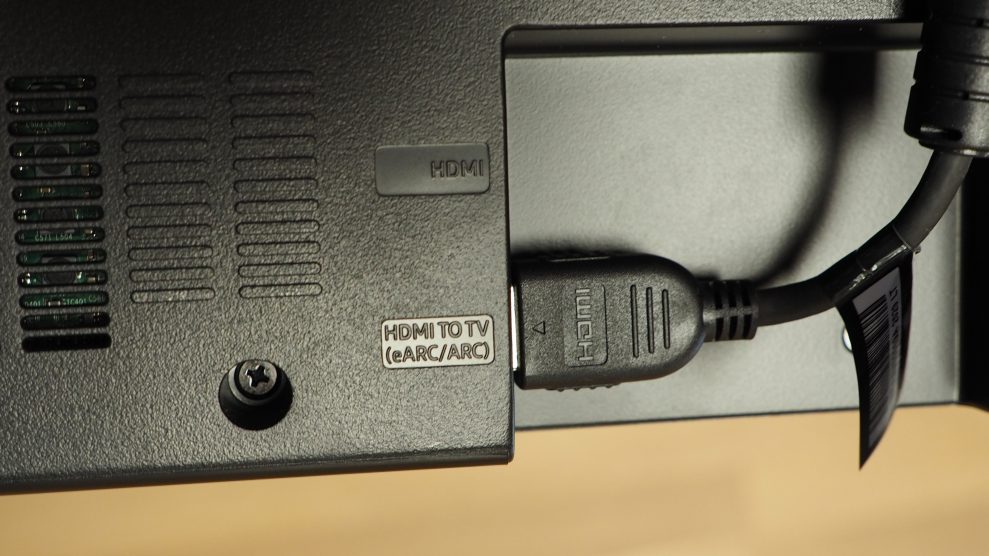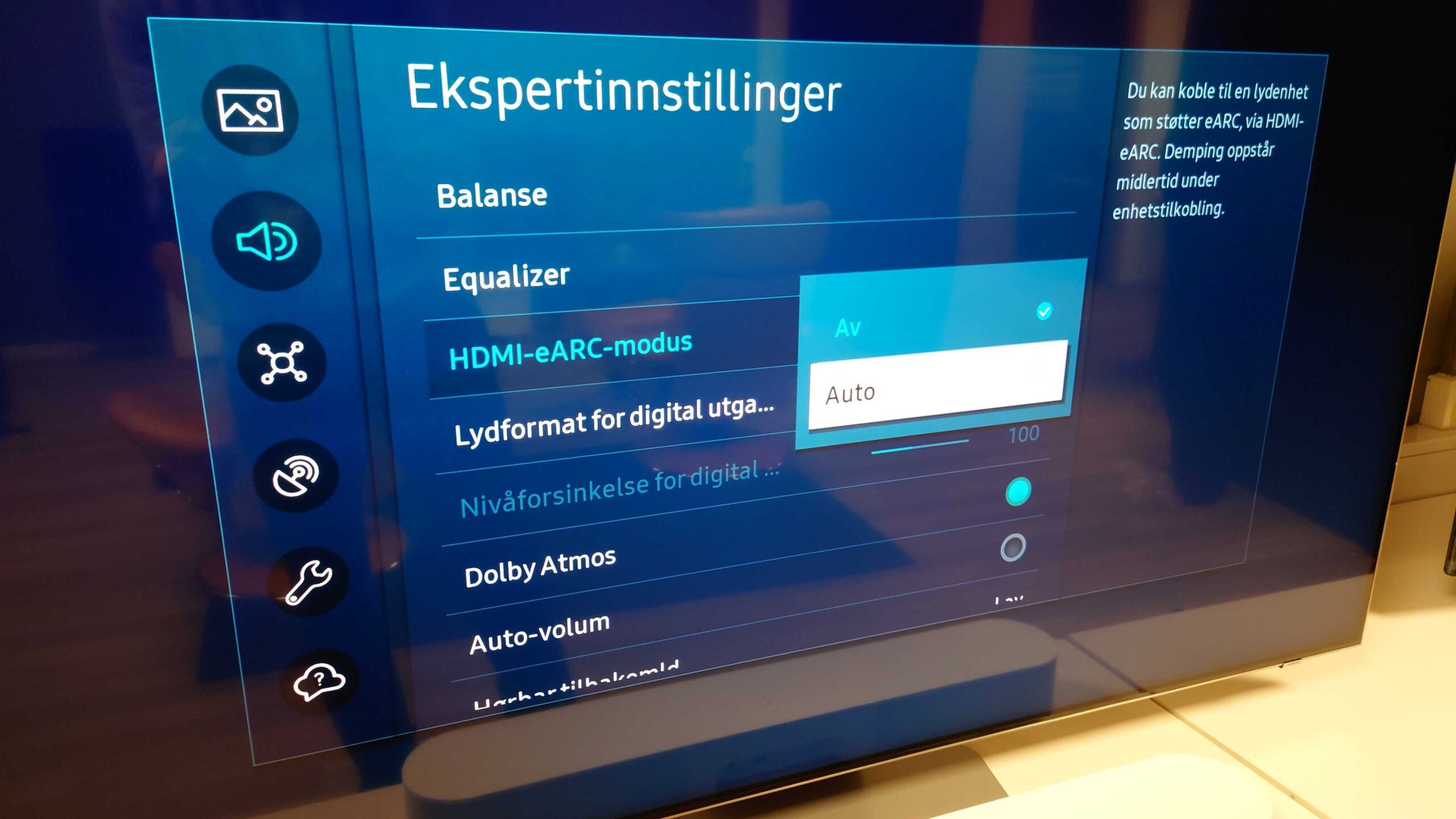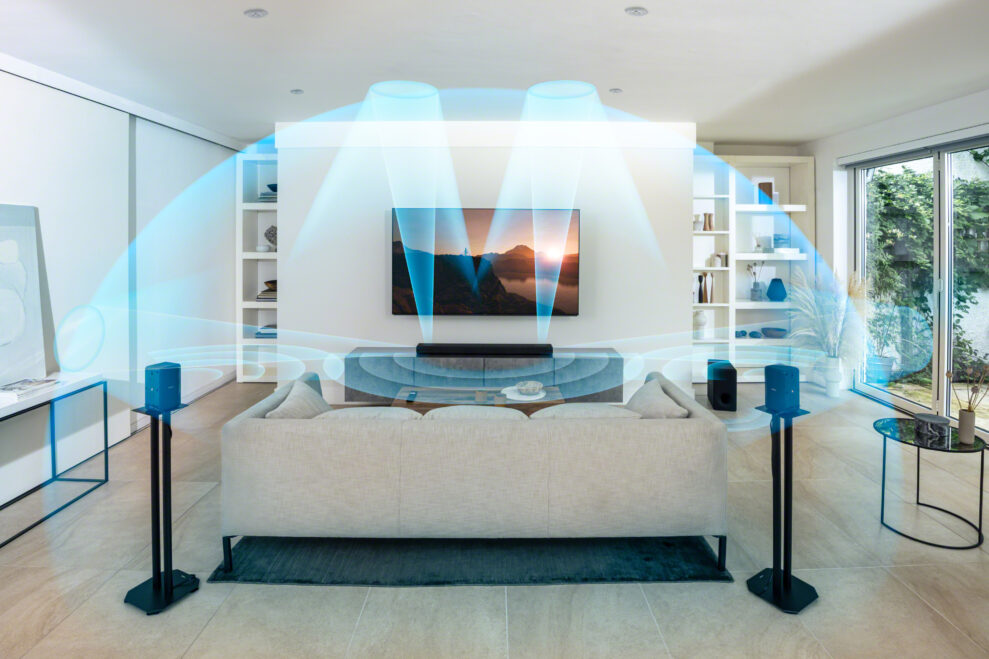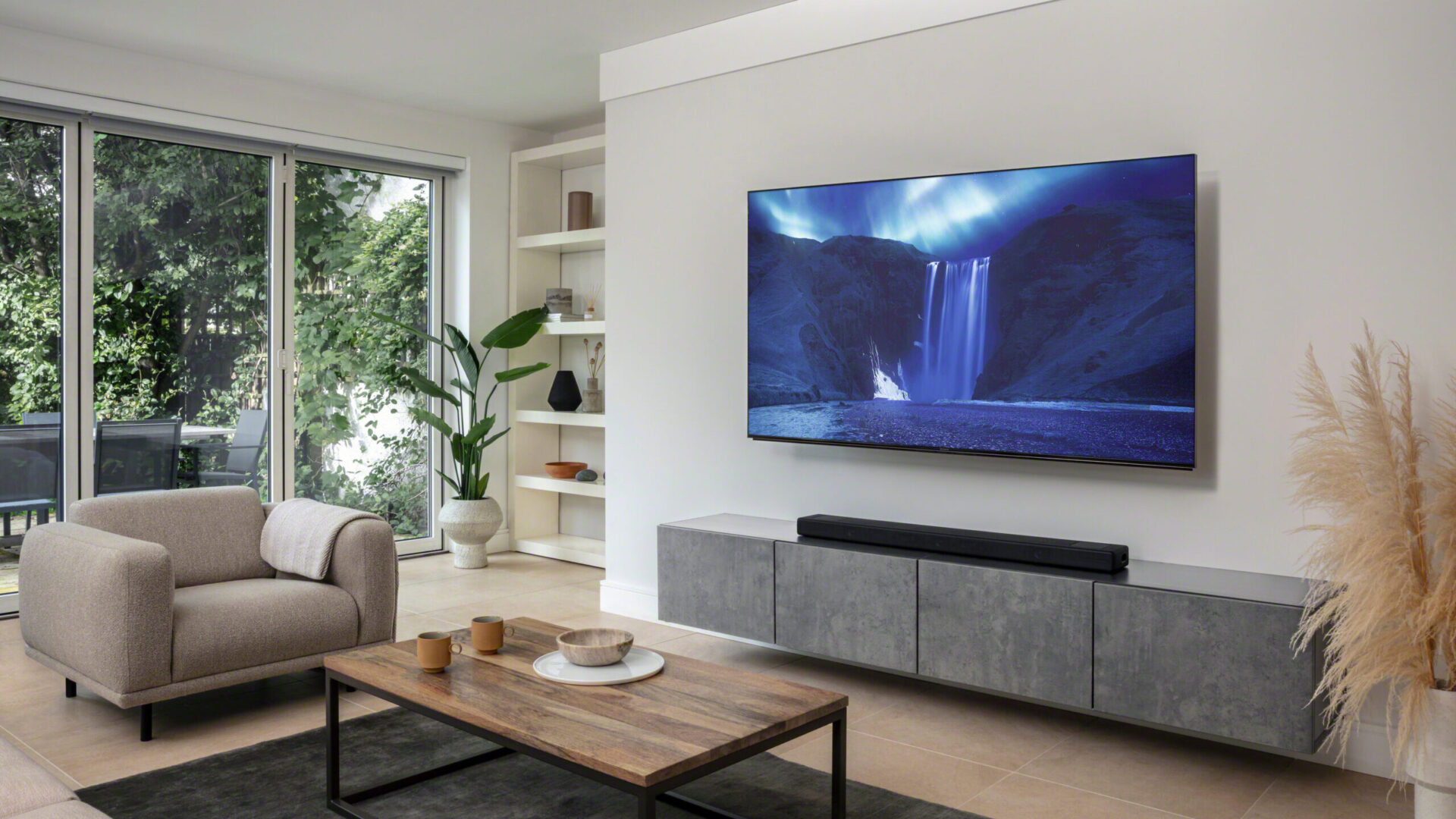A soundbar is an easy way to upgrade your TV’s audio, but there can be some pitfalls along the way. Here we give you some quick tips on how to get the best possible sound out of your new soundbar!
Read also: The best soundboards of the year 2022-2023
How to hang the TV on the wall
How to choose the right TV size
1. Correctly position the soundbar in relation to the TV
The soundbar should be placed horizontally and close to the TV. What we say directly under or above the TV screen. This is important to get the best possible connection between picture and sound.
Since the soundbar must reproduce the sound of voices and everything that happens on the screen, it is naturally important that what you see and hear feels like it comes from the same place.
(It might sound obvious, but trust us, we’ve seen a lot of weird setups…!)
At the same time, it’s important that the soundbar doesn’t get TOO close. For example, you don’t want the speaker to obscure the picture in any way, or for the border of the screen to prevent optimal sound dispersion from the speakers.
In general, it can be said that the soundboard needs some air around it to function optimally.
It can be tempting to hide the soundboard in a closet or bookcase, but you should be aware that this can negatively affect the sound. This is especially important for soundboards with top or side mounted speakers. These are positioned so that the sound is reflected off the ceiling and side walls and if they are covered unnecessarily some of the surround effect may be lost.
The natural and simple location for a soundbar is therefore on the TV stand directly below the screen. Alternatively, it can be placed on a small shelf or mounted on a wall nearby.
If your soundbar has a separate subwoofer, it should preferably be placed directly on the floor, in one of the corners closest to the TV and soundbar. Any rear speakers are placed to the left and right side of the listening position, usually at or just above ear level.
2. Choose the best connection between the soundbar and TV (HDMI ARC/eARC)
When you connect your TV and soundbar, you have several options, either via cable (HDMI or optical) or a wireless connection (Wi-Fi or Bluetooth). For the best possible sound, you should choose HDMI cable.
If your TV has HDMI ARC (Audio Return Channel), we recommend using it to connect to the soundbar. This provides better sound, support for new surround formats (Dolby Atmos) and at the same time allows you to control the volume remotely with the TV remote control.
Newer TVs and soundbars also support HDMI eARC, which offers higher bandwidth and even better sound quality.

3. Check sound settings (on TV and soundbar)
After connecting the soundbar via HDMI ARC, you may need to change the audio settings of your TV. Check the menu under Sound and select HDMI ARC/eARC if you can find it.

The soundbar can also have various audio settings (sound mode, tone control, equalizer and the like) that allow you to adapt and adjust the sound according to your preferences. Sound modes such as “Film” usually perform best on movies, while “TV” may be more suitable for talk programs and news.
If you have children or difficult neighbors, you can look for a “night mode” that amplifies voices, but muffles loud sounds like gunshots or explosions with strong bass.
4. Does your soundbar have automatic room correction? Use it!
No two listening rooms are exactly alike: both size, design and furnishings influence the acoustics, and therefore also the sound experience to a greater or lesser extent. That’s why many soundbars now feature automatic room correction, which measures and adapts sound to the acoustics in your listening room.
Sonos TruePlay is an example of such a system: Here, the microphone in a compatible iPhone is used to gauge local listening conditions. Other soundbars come with separate or built-in microphones for the same purpose.
It is recommended to use the space fix option where it exists. You can then use the calibrated sound as a starting point, then refine the sound to your liking.
5. Want even better sound? Check the update options
Most soundbars come as ready-made all-in-one solutions, but some manufacturers also offer additional expansion options. Examples of common upgrades are a wireless subwoofer or additional surround speakers placed in the back of the room. These are often sold separately. If you’re moving the soundbar to a bigger room or want even bigger surround sound, this can be a good option to have in your back hand!

Did we miss something important you were wondering about? What experiences do you have yourself with creating soundboards? Feel free to ask questions in the comments section below!


